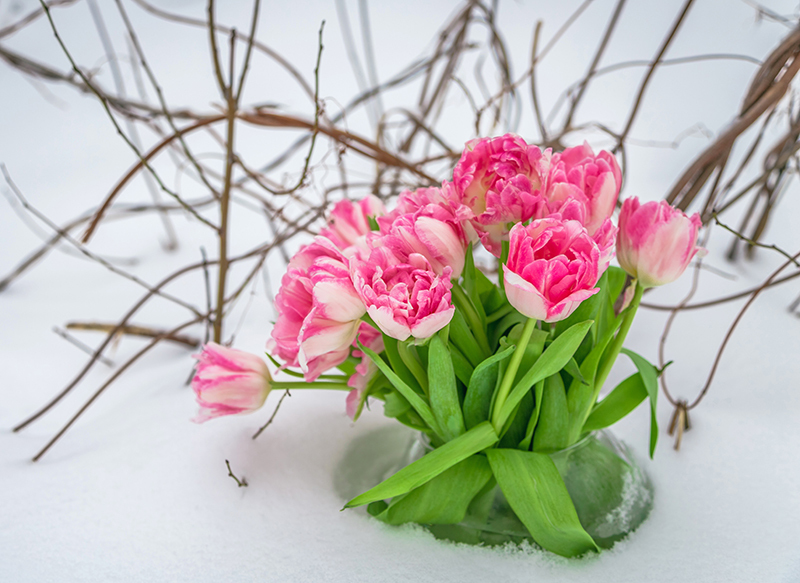Discover the Unseen Side of Tulips with Seven Surprising Facts
Posted on 25/08/2025
Discover the Unseen Side of Tulips with Seven Surprising Facts
Tulips enchant people all over the world with their vibrant colors and elegant shapes, heralding the arrival of spring and symbolizing grace, beauty, and rebirth. But how much do you really know about these dazzling blooms? Let's peel back the petals and explore the hidden stories, unusual characteristics, and historical significance that make tulips far more fascinating than you might imagine. Here are seven surprising facts about tulips that will change the way you see these iconic flowers forever.
1. Tulips Did Not Originate in the Netherlands
When you hear the word tulip, you probably picture vast Dutch fields painted in vivid stripes. However, tulips aren't actually native to the Netherlands! This is one of the most fascinating and lesser-known tulip facts.
A Journey from the East
- Origin: The natural habitat of wild tulips stretches across a vast region, primarily in Central Asia, including present-day Kazakhstan, Uzbekistan, and the foothills of the Himalayas.
- Ottoman Embrace: Tulips were cherished by the Ottoman Empire long before they became iconic in Dutch culture. In fact, the period between 1718 and 1730 in the Ottoman Empire is even called the "Tulip Era," highlighting their deep appreciation for these flowers.
- European Debut: Tulips were introduced to Western Europe in the 16th century, quickly captivating botanists and aristocrats alike.
Now, although tulips are synonymous with the Netherlands, their exotic origins tell a hidden tale of global travel and cultural exchange.

2. Tulips Once Triggered the World's First Economic Bubble
Few people realize that tulips once ignited an economic frenzy so intense it became the first known financial bubble in history, a period remembered as Tulip Mania.
The Rise and Fall of Tulip Mania
- What Happened? In the early 17th century, particularly around 1636-1637, the price of rare tulip bulbs in the Netherlands soared astronomically, with single bulbs exchanging hands for more than the price of a house.
- Unprecedented Speculation: Tulips became a status symbol, with their unusual colors and patterns - especially "broken" tulips caused by viral infection, which made petals streaked and speckled.
- The Crash: The bubble burst abruptly, bankrupting many investors and sending shockwaves through the Dutch economy.
This crazy episode doesn't just highlight tulips' allure but demonstrates how the beauty and rarity of a flower can grip an entire nation--sometimes, with devastating consequences.
3. Tulips Come in Nearly Every Color--Except True Blue
Wander through a gardener's paradise of tulips and you'll find a kaleidoscope of hues--fiery reds, sunny yellows, gentle pinks, pure whites, and even dramatic purples and deep, almost-black tones. But there's one color you'll never see: a pure, natural blue tulip.
The Science Behind Tulip Colors
- Tulips' vibrant colors are due to an array of pigments: anthocyanins for reds, purples, and blues, and carotenoids for yellows and oranges.
- Despite scientific advancements, a true blue pigment eludes cultivators. Attempts to genetically modify tulips for a blue hue have been only partially successful, producing purplish shades at best.
This unique tulip fact means that the quest for a genuine blue tulip continues to inspire breeders and botanists around the world, making blue tulips a kind of "holy grail" in the horticultural universe.
4. Tulip Flowers Are Edible (But With a Caution!)
Here's an unusual tulip trivia: tulip petals are technically edible. Throughout history and especially during desperate times, these flowers have provided more than just beauty.
From Centerpiece to Cuisine
- World War II: During the "Hunger Winter" of 1944-1945 in the Netherlands, famine gripped the country. People turned to tulip bulbs as a last resort, boiling, grinding into flour, or even baking them into bread.
- Modern Culinary Uses: Today, chefs sometimes use tulip petals as colorful garnishes. However, not all varieties are safe or tasty--some can cause stomach upset, and the bulbs, if not properly prepared, are toxic.
Note: Never eat tulip bulbs or petals from florists, as they may have been treated with pesticides or chemicals. If you're curious, consult a trusted source or edible flower specialist.
5. Tulip Bulbs Once Replaced Currency
This astonishing fact about tulip history highlights just how valuable these flowers were at the height of their popularity.
More Precious Than Gold
- During the peak of Tulip Mania, individual tulip bulbs--especially rare and vividly streaked types--could command astronomical prices.
- Tulip bulbs were sometimes traded in place of actual money, used to buy land, livestock, or luxury goods. In some cases, contracts for future delivery of these bulbs were written and exchanged just like today's stock shares!
Imagine paying for a home with a single flower bulb--a testament to how tulips became a symbol of both beauty and economic risk.
6. Tulips Have a Secret Symbolism in Romance
Roses often steal the show in romantic symbolism, but tulips have their own hidden language. In the Victorian "floriography" tradition, every flower had a secret meaning.
The Hidden Tulip Message
- Red Tulips: "Declaration of love"--if someone gives you red tulips, consider it a strong, heartfelt romantic gesture.
- Yellow Tulips: Originally meant hopeless love and jealousy, but today symbolize cheerfulness and sunshine.
- White Tulips: Represent forgiveness or new beginnings, making them perfect for apologies or transitions.
- Purple Tulips: Associated with royalty and admiration.
Through subtle bouquets and color choices, tulips have long whispered messages of love, friendship, and hope to those who know how to read their meanings.
7. Tulips Inspire Art, Festivals, and Science Worldwide
Few flowers have inspired such a diverse legacy as the tulip. Their impact spans art, culture, and science--an unseen side often overshadowed by their visual appeal.
Global Symbols of Spring and Creativity
- Festivals:
- Countless cities--from Amsterdam to Istanbul, Ottawa to Srinagar--celebrate annual tulip festivals, drawing millions who marvel at fields ablaze with color.
- Art & Literature:
- Tulips burst forth in Dutch Golden Age paintings, Ottoman ceramics, Persian poetry, and even modern design.
- Science & Conservation:
- Botanists continually study wild tulip species to inform conservation efforts, preserving genetic diversity and cultivating disease-resistant varieties.
All of this underlines why tulips are not just beautiful spring messengers but influential players in human history, art, and horticulture.

How to Appreciate Tulips Like Never Before
Having uncovered these seven surprising facts about tulips, it's easy to see why the unseen side of tulips is so worth discovering. Whether you're a gardener, an art lover, a history buff, or just a fan of natural wonders, tulips have more to offer than meets the eye.
Tips for Embracing the Full Wonder of Tulips:
- Visit a Tulip Festival: Witness the stunning variety in person and learn from growers and enthusiasts.
- Try Cultivating Rare Varieties: Seek out heirloom or botanical tulips for your garden to connect with their wild cousins.
- Enjoy Tulip-Themed Art: Explore paintings and decorative arts that feature tulips to see how artists interpret their shapes and colors.
- Share Tulip Meanings in Your Bouquets: Choose tulips to send secret messages through color--a beautiful tradition to revive.
Conclusion: The Fascination of Tulips Endures
As you can see, tulips are more than just garden favorites. Behind their bright petals lie tales of epic journeys, economic upheaval, culinary curiosity, delicate symbolism, and global celebration. For centuries, tulips have woven themselves into the fabric of human society, inspiring awe and passion that continues to this day.
Next time you spot a tulip--in a vase, a garden, or a painting--pause and remember the extraordinary secrets and stories hiding within this humble bloom. Unlock the unseen side of tulips, and you may just fall in love with them all over again.
Ready to explore more floral wonders? Subscribe to our newsletter and keep discovering the hidden worlds within your favorite plants!
Latest Posts
Greener Desks: Best Low Maintenance Plant Choices for Work
Discover the Unseen Side of Tulips with Seven Surprising Facts
Your Birth Flower: A Personal Reflection of Who You Are






